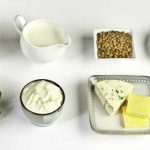What Is Gout?
For those who do not know what gout is, it is a type of arthritis caused by an excess production of uric acid in the bloodstream. This can cause extreme pain and stress on the joints as the body responds to the crystal-like structures of uric acid occupying the bloodstream. Typically, the most affected area can be the bottom of the big toe which is considerably the most common area of complaint.
Common symptoms of gout include intense swelling and sudden pain in one or many of the joints in the body. Symptoms may also include warm flare-ups accompanied with acute pain, however, this is most likely one of the first phases that eventually leads to more painful sensations. Therefore, if you suffer from any of these symptoms, it can fortunately be treated with just a few simple changes in your diet.
Diet and lifestyle choices play a massive role on treating issues such as gout and what you choose to put into your body will either make or break the overall condition of your health. As mentioned above, the major culprit of this condition is the excess production of a substance called uric acid which is considered to be a waste product that is produced by the body as it digests specific foods. There are a range of certain foods that may trigger uric acid production in the bloodstream.
How To Tell Gout To G(Et)Out?
When making changes in your diet, it is important to identify the common DO’s and DON’T’s of a gout-friendly diet. Diets that help treat the adverse symptoms of gout usually require patients to avoid high-purine foods, which increase uric acid build-up in the bloodstream.
Purines are compounds that are naturally produced in the body however they break down into uric acid in the blood which impedes a healthy blood flow over time. Patients should focus on maintaining 6 mg/dl of uric acid levels in the blood in order to reduce their risk of having a gout attack. In order to do this, it is recommended to follow the DO’s and DONT’s of the Gout-diet.
DO’s:
-
Eat plenty of nutrient dense fruits and vegetables – especially cherries, which have been studied as methods to decrease uric acid levels in the blood.
-
Load up on complex carbohydrates, such from wholegrains such as brown rice, barley, rye oats or millet.
-
Include more plant-based proteins such as nuts, tofu, legumes (beans, lentils, soybeans, etc.).
-
Aim for low-fat dairy products instead of full fat.
-
Drink generous amounts of water daily in order to keep the body adequately hydrated.
-
Increase your Vitamin C intake by including a variety of colourful fresh fruits and vegetables. Foods rich in Vitamin C include: citrus fruits (oranges, grapefruit, kiwis, etc.), tomatoes, bell peppers, cantaloupe. If not obtained from food, a Vitamin C supplement is highly recommended.
DONT’s:
-
Avoid alcohol consumption
-
Refrain from added sugars such as raw cane sugar, brown sugar, high-fructose corn syrup, fructose, sucrose, honey, malt syrup, agave nectar, molasses, etc.
-
Say goodbye to high-purine foods such as:
-
Organ meats (liver, kidney, brain, etc.), veal, bacon, rabbit
-
Certain types of seafood such as sardines, tuna, shellfish, trout and scallops
-
Be careful with foods high in saturated fat: Fat latches onto uric acid in the kidneys which is why it is best to avoid oily foods, full-fat dairy products, and several other high-fat foods.
Although a diet low in purines can help minimise uric acid levels, it cannot cure the symptoms of gout entirely. There are many prescribed medications that can prevent the risk of increased uric acid build-up in the blood.
It is strongly recommended to meet with a registered dietitian before taking steps towards a new diet, especially with the intention of addressing chronic health problems.














